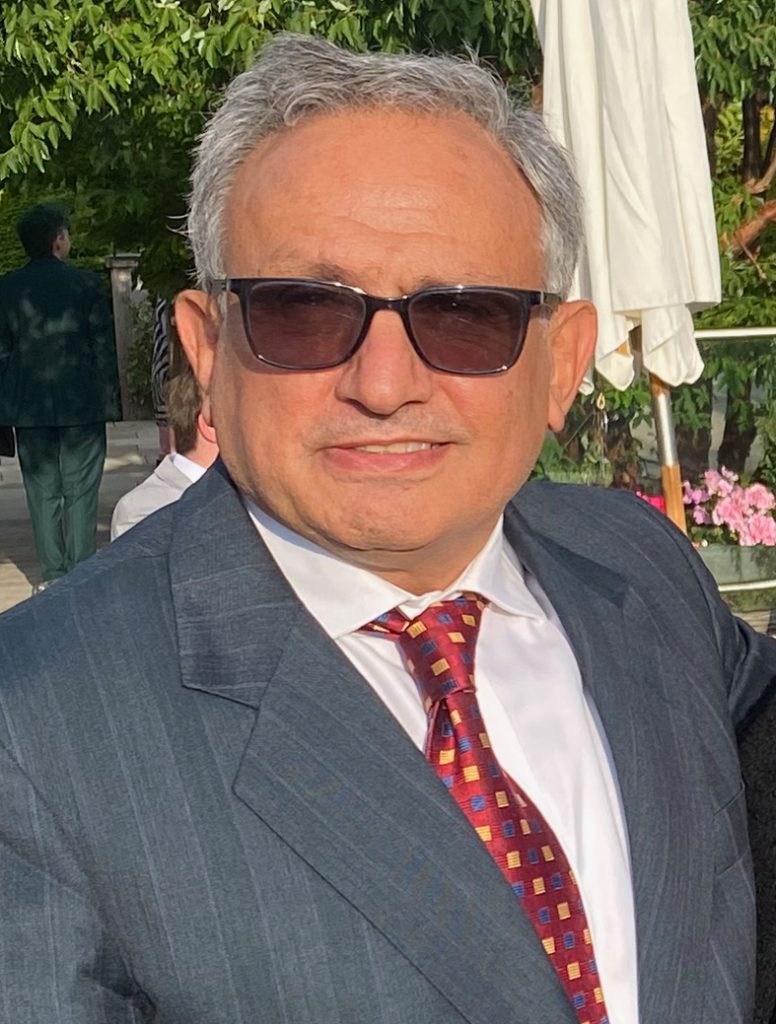Professor George Bou-Gharios

Professor Bou-Gharios studies how connective tissues—especially the extracellular matrix (ECM)—are formed, regulated, and damaged in disease.
Major achievements and areas of impact :
Discovery of a fibroblast-specific enhancer for the collagen 1α2 gene.
While working in the USA in the lab of Benoit de Crombrugghe, Bou-Gharios identified a regulatory DNA element (an enhancer) upstream of the collagen type I alpha2 gene (COL1A2) that is fibroblast‐specific. He showed that this enhancer region is evolutionarily conserved between rodents and humans, and that it cooperates with the proximal promoter to drive spatial and temporal expression of type I collagen. This work provides an important paradigm for how collagen genes are regulated in connective tissues, which is central to understanding tissue development, repair and disease.
Development of transgenic reporter mouse models for fibrosis and connective‐tissue disease. By linking the identified enhancer/promoter elements (e.g., the Col1a2‐reporter) to reporter genes, his group established mouse lines that allow in vivo tracking of collagen I-producing cells. These models are used to study fibrosis, scarring, tissue repair and matrix‐remodelling processes. These models are have been used by pharmaceutical companies for testing anti-fibrotic drugs in vivo.
Mechanistic insights into fibrotic disease and ECM regulation. Bou-Gharios’s work has elucidated how matrix gene regulation (for example collagen, fibronectin, and other ECM components) is altered in fibrosis (e.g., in systemic sclerosis, lung, kidney, muscle fibrosis). For example, his group studied how the signalling molecule endothelin-1 mediates profibrotic responses to TGF-β in human lung fibroblasts.His lab also explored how the balance between matrix synthesis (e.g., collagen type I) vs degradation (matrix metalloproteinases MMPs) and their inhibitors (TIMPs) affects connective‐tissue homeostasis and disease.
Work on cartilage, bone and osteoarthritis: More recently, Bou-Gharios has extended his matrix‐biology expertise into the fields of cartilage degeneration and osteoarthritis (OA). His work on aggrecan gene regulation in chondrocytes, as well as targeted inhibition of aggrecanases to prevent cartilage degradation in mouse models of spontaneous OA. He has also contributed to studies on skeletal defects, Wnt signalling in bone formation, and the role of matrix regulators (e.g., TIMPs) in bone quality and architecture.
Translational and therapeutic relevance The work of his group is translationally relevant: the transgenic models are used for drug‐testing, the generation of conditional alkaptonuria mouse was fundamental in testing the drug nitisinone which was approved by the EMA in 2020.The regulation of matrix proteins is fundamental to wound healing, scarring, musculoskeletal ageing and degenerative disease — all areas of clear clinical importance. His research has significantly advanced our understanding of how connective tissues are maintained and how their dysregulation leads to fibrosis, arthritis, and ageing-related degeneration. By linking gene regulation to disease mechanisms, his work provides new directions for therapeutic intervention and tissue repair.
Synopsis of the Conference to be presented by Professor Bou-Gharios :
From Gene Transcription and Cell-Specific Regulation to Animal Models of Connective Tissue Disease
In our early work, we relied on DNase I hypersensitivity mapping to identify potential enhancer regions. Today, our approach is guided by the ENCODE encyclopedia, which greatly improves our accuracy. We focus on three hallmark histone modifications associated with active enhancers — mono-methylation of histone H3 lysine 4 (H3K4me1), acetylation of H3 lysine 27 (H3K27ac), and tri-methylation of H3 lysine 4 (H3K4me3) combined with phylogenetic conservation to pinpoint multiple cis-regulatory elements.Using this approach, we identified a fibroblast-specific enhancer in the Col1a2 gene, which allowed us to visualize and characterize cells expressing collagen type I. Interestingly, these cells were not limited to fibroblasts, revealing new insights into the mechanisms of fibrogenesis and uncovering signalling pathways that influence this process in lung, skin and kidney.
The extracellular matrix (ECM) forms the structural framework of connective tissues, and many ECM genes display cell-type–specific expression patterns. We have leveraged this property by identifying enhancer elements within gene sequences that drive cell- or tissue-specific transcription, enabling the development of animal models that trace and manipulate cells regulating particular ECM genes.
In the context of osteoarthritis, where excessive degradation of ECM proteins leads to cartilage breakdown, we identified several enhancers within the aggrecan (ACAN) gene. By harnessing these enhancers, we expressed regulatory genes such as CCN2, helping to elucidate their role in maintaining articular cartilage integrity. We also utilized aggrecan-derived enhancers to deliver tissue inhibitors of metalloproteinases (TIMPs), which block matrix metalloproteinases (MMPs), thereby mitigating cartilage degradation. Given that MMP13 plays a central role in ECM destruction in osteoarthritis, we have also focused on dissecting its regulatory mechanisms — an ongoing line of investigation.
Together, these studies have established a versatile experimental framework that enables the identification, ablation, or targeted treatment of pathogenic cell populations involved in fibrosis and osteoarthritis, providing new avenues for therapeutic intervention.